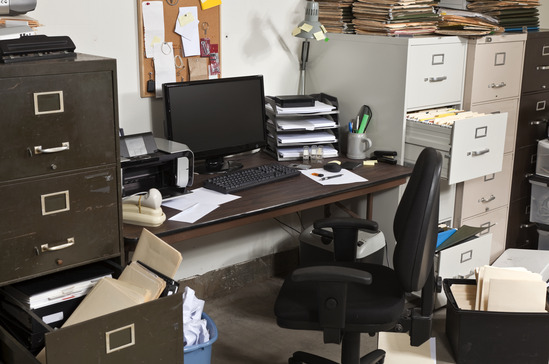A cluttered workspace can hamper productivity considerably. Avoid a potentially expensive mishap by using these tips to get organized.
Clutter Costs
Clutter in the workplace isn’t just unsightly, it can be costly too. PwC estimate that a single lost document can cost a company up to $122. With companies losing an average of 7.5 percent of all their documents in a given year, this figure can quickly add up.
Several costs factor into the price of a lost document. Not only does it cost time to look for the document, but time and money must be spent recreating it in the event that it is never recovered. This is especially true with your business insurance documents. Money can also be lost if key decision-makers make bad judgements due to having missed out on vital information that was contained in the lost document. Any way you stack it, missing documents can cost you big time.
Getting Organized
Imagine you need to quickly grab a file for a client meeting. However, you lose precious seconds as you rifle through a disorganized file cabinet, unable to remember whether the document is filed under the client’s name or their sales zone.
This scenario is common. Most firms have no clear system that specifies how documents get organized or who is responsible for retrieving them, according to experts. It is recommended to adopt a naming system you can stick with. For example, organize files by letter, number, date or geographic location. Whatever system you choose, make sure you stick with it as this will ensure ease of storage, management and retrieval.
It’s not uncommon to want to scatter files among different cabinets, drawers and rooms. According to organization professionals, a typical office will have files in desks, various file cabinets and in file rooms. This is not advised; keeping documents in multiple locations creates multiple ways for you to lose those documents. But getting organized doesn’t always come naturally or easily. Experts recommend mandatory file system implementation. If people fail to get on board with the new system right away, he advises leaders to consistently notify them of any missteps in compliance.
Organized Filing System
Once you’ve got a filing system nailed down, make sure all employees are up to speed by providing them with training on how to use the new system. A filing system is only as organized as the people using it. Growing companies need to be especially mindful of the necessity of training employees on file naming and organization systems.
It may even be helpful to hire a professional organizer to produce how-to manuals for your staff. They can provide cost-saving employee training systems, your employees can refer to them with any questions about the new system.

